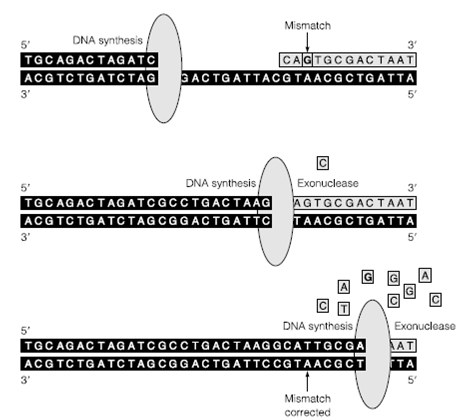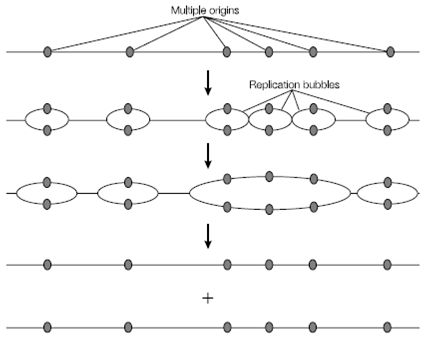Linear genomes
A Bacterial chromosome is typically presented as a single circle of double-stranded DNA. In reality the condition is far more complex. Most importantly Bacteria may have one or more chromosomes each of which may be linear or circular. However, the full details of the mechanisms of bacterial linear DNA replication have yet to be fully elucidated. The linear chromosome of Borrelia burgdorferi has an origin of replication in the center, and presumably replicates bidirectionally in Figure, although the mechanisms of termination are unclear. More unusual mechanisms of linear chromosome replication are exhibited through the bacteriophage such as the Bacillus phage ?29 where replication is initiated at either end of the chromosome and is terminated in the center through the collision of the two replisomes. Same systems may exist in other Archaea and Bacteria.

Figure: The exonuclease action of DNA polymerase I.

Figure: Bidirectional replication of a linear bacterial chromosome.